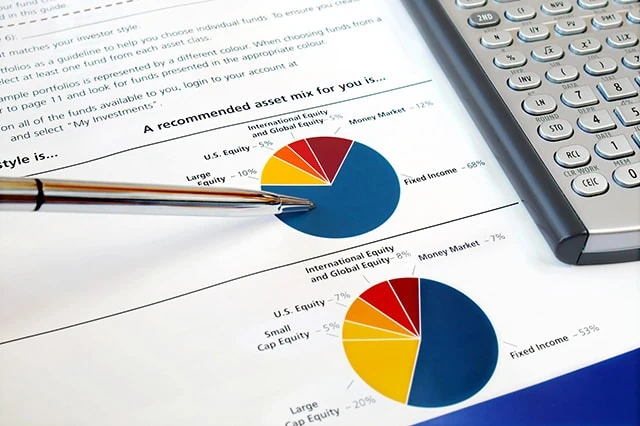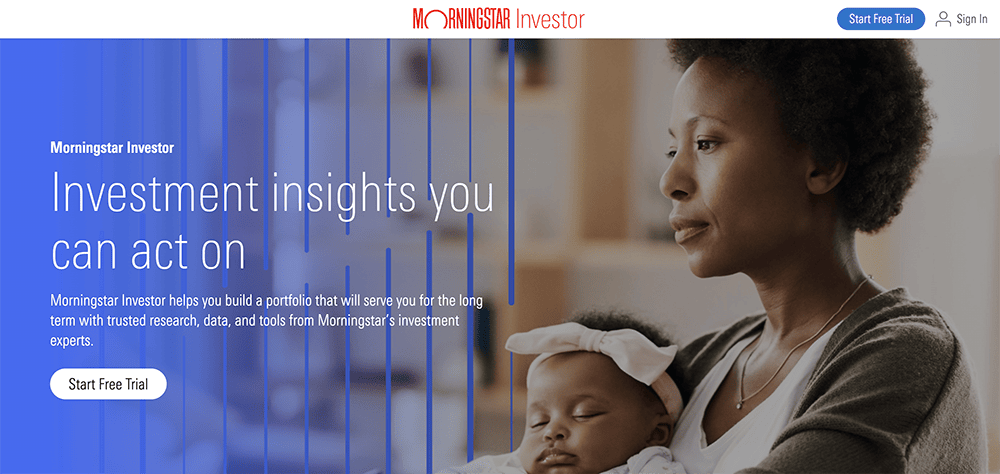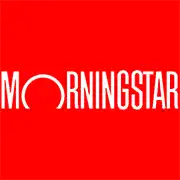You know the refrain. The key to achieving long-term investment success is simply to make an investment plan and stick to it. You’ve seen it in the marketing literature for mutual funds and ETFs your entire life.
Well, one way to do that is with target-date funds—and today, we’re going to spend a little time on one particular lineup: Fidelity’s target-date funds.
Investing isn’t necessarily difficult, but it does require your attention. You have to regularly check your allocation to make sure the risk you’re taking is appropriate for your age and stage of life. You generally don’t want to be too heavy in bond funds early in your career because you’re unlikely to keep pace with inflation. You have the ability to take more risk because time is on your side; you have years or even decades to recover losses. You’re also pulling in a paycheck and have the ability to offset losses by simply saving and investing more.
But you generally don’t want to be too heavy in stock mutual funds later in life, as you won’t have time to recover any potential losses. The calculus changes. You have less time to recoup losses, and once you are retired you can’t replace losses by saving and investing more. So, it’s important to invest more conservatively and avoid gambling with your golden years.
In an ideal investment plan, you follow a glidepath (a plan that shifts your investing mix over time) from more aggressive to more conservative over the course of your investing life.
This isn’t always easy to do on your own; market noise has a way of distracting us. When the market is ripping higher, it’s natural to want to take more risk, regardless of whether you should. And when the market is looking rough, it’s psychologically hard to add risk even when you need to in order to meet your long-term goals.
One of the most efficient ways to build a financial plan and actually stick to it is by buying and holding a target-date fund.
Today, I’m going to talk about one of the most popular target-date lines around: Fidelity Freedom target-date funds. I’ll start by talking about what a target-date fund is and does, discuss why shifting assets is so important, and then delve into specifically what Fidelity’s target-date funds have to offer.
Disclaimer: This article does not constitute individualized investment advice. Securities, funds, and/or other investments appear for your consideration and not as personalized investment recommendations. Act at your own discretion.
What Is a Target-Date Fund?
Target-date funds are a type of mutual fund that have become popular in retirement planning over the past two decades. They go by different names, interchangeably called several things, including:
- lifecycle funds
- age-based funds
- dynamic-risk funds
But the concept at the core is simple: Target-date funds invest in a more aggressive portfolio of mostly equity funds to start, then gradually shift to a more conservative portfolio of mostly bond funds as they approach a target retirement date.
However, the target-date fund’s allocation to stocks will generally never go to zero. Retirees need growth too, and most should maintain at least a little exposure to the stock market. The beauty of the target-date fund is that it changes your asset allocation to match your risk tolerance as you age—and it does it automatically without requiring you to actually do anything.
The target retirement dates are intended to be estimates; they don’t have to be super precise. Generally, most mutual fund families will create target date funds in five-year increments (say, 2025, 2030, 2035, etc.).
For the investor, the math here is simple enough.
Example
Let’s say you’re 40 years old as of 2025, and that you expect to work until age 70. Your expected retirement date would be in the year 2055. So, investing in a target-date fund with a retirement date of 2055 would make sense.
If your retirement date falls in between five-year increments, that’s no problem! If you planned on retiring in 2058, for instance, you could invest in a 2055 fund, a 2060 fund, or a combination of the two.
What if your expected retirement age changes? No problem! Target-date funds are normal mutual funds and can be bought or sold as your needs change.
Related: 17 Best Investment Apps and Platforms [Free + Paid]
What Is Asset Allocation?
A lot of investors (and particularly young investors) dream of making a killing picking stocks. And that’s fantastic. Stock picking is stimulating and, if done well, can add some zeros to your net worth!
When push comes to shove, however, your asset allocation strategy is far more important than individual stock picking when it comes to meeting your financial goals. Asset allocation sits at the core of target-date funds and, really, at the core of all financial planning.
But what exactly is asset allocation?
Every planner has their own take, but the basic idea is simple. You diversify your portfolio across different asset classes (stocks and bonds, for instance) that, ideally, move at least somewhat independently of each other. A typical asset allocation will include:
- stocks (or stock mutual funds)
- fixed-income investments (bonds or bond funds)
- cash
- alternative assets such as gold, commodities, or real estate
You arrange the parts so that the overall portfolio has a risk and return profile that makes sense for you. And (importantly) you rebalance the portfolio when the weights to each asset start to divert from your plan.
Example
Let’s say your ideal asset allocation had you 60% allocated to stocks and 40% allocated to fixed income.
First, let’s say the stock market crashes. Your stock weighting has suddenly dropped to just 50%, and your fixed-income investments have jumped to 50% of your portfolio’s worth. You need to rebalance your portfolio to get back to 60/40. You would do that by selling off some of the fixed-income investments and buying some stock.
Now, let’s say instead that the stock market shoots higher, and you find yourself allocated 70% to stocks and 30% to fixed-income investments. If you wanted to rebalance back to 60/40, you would sell some of your stocks and buy new fixed-income investments.
The idea here is to constantly reduce risk and smooth out your returns by buying low and selling high.
Asset allocation within a target-date fund takes it a step further. Apart from regular rebalancing due to market moves, the target-date fund’s asset allocation decisions involve gradually reducing the risk (buying fewer and less risky stocks, and buying more bonds) as the fund gets closer to its target retirement date.
Related: 15 Best Investing Research & Stock Analysis Websites
A Look at Fidelity Target-Date Funds
Fidelity is, of course, one of the largest mutual fund companies in the world. I’ve personally discussed Fidelity’s best index funds for Young and the Invested, and it’s worth noting that Fidelity ETFs can be useful for tactical investors.
Fidelity also manages one of the largest target-date fund families. In fact, there’s a good chance your company 401(k) plan has Fidelity target-date funds as an investment option.
There are literally dozens of Fidelity target-date funds, and we will cover each in a moment. But all share certain characteristics. For example, all Fidelity target-date funds hold underlying funds managed by Fidelity. So, essentially, you can think of a Fidelity target-date fund as a portfolio of regular Fidelity mutual funds specifically allocated for a person your age.
That said, there are some significant differences, particularly when it comes to fees and the expense ratio of each particular fund.
Fidelity Freedom Funds
The Fidelity Freedom Funds are a family of 14 total funds: 13 target-date funds with target retirement dates currently spanning 2010 to 2070, as well as an income-focused fund, the Fidelity Freedom Retirement Fund (FFFAX):
| Fund | Ticker | Expense Ratio |
|---|---|---|
| Fidelity Freedom Retirement Fund | FFFAX | 0.46% |
| Fidelity Freedom 2010 Fund | FFFCX | 0.46% |
| Fidelity Freedom 2015 Fund | FFVFX | 0.50% |
| Fidelity Freedom 2020 Fund | FFFDX | 0.55% |
| Fidelity Freedom 2025 Fund | FFTWX | 0.59% |
| Fidelity Freedom 2030 Fund | FFFEX | 0.61% |
| Fidelity Freedom 2035 Fund | FFTHX | 0.64% |
| Fidelity Freedom 2040 Fund | FFFFX | 0.66% |
| Fidelity Freedom 2045 Fund | FFFGX | 0.68% |
| Fidelity Freedom 2050 Fund | FFFHX | 0.68% |
| Fidelity Freedom 2055 Fund | FDEEX | 0.68% |
| Fidelity Freedom 2060 Fund | FDKVX | 0.68% |
| Fidelity Freedom 2065 Fund | FFSFX | 0.68% |
| Fidelity Freedom 2070 Fund | FRBDX | 0.68% |
Fund managers build the allocations for each up exclusively from underlying Fidelity funds. And each of the Fidelity Freedom Funds are expected to reach their most conservative allocation 10 to 19 years after the target date. At that point, the target asset allocation is expected to be similar to aligns with Fidelity Freedom Retirement (25% stocks, 70% bonds, and 5% cash or short-term funds). Once the fund has passed its target date, its assets will eventually be merged with FFFAX.
While the process is designed to follow a glidepath, the funds are actively managed and involve a degree of human discretion.
Let’s look at a couple examples.
Fidelity Freedom 2065 Fund (FFSFX)
The most aggressive fund currently in the lineup is the Fidelity Freedom 2065 Fund (FFSFX), which would be appropriate for an investor in their late 20s/early 30s who intends to retire around the age of 70.
FFSFX allocates roughly 90% of its assets to stocks (split between 51% U.S. and 39% international)*. The remaining 10% or so is invested in bonds. That’s the highest exposure to stocks within this Fidelity Freedom series; the closer to retirement, the less exposure to equity and the more exposure to debt.
Fidelity Freedom 2065 gets its stock exposure through funds such as the Fidelity Series Growth Company Fund (FCGSX) and Fidelity Series Emerging Markets Opportunities Fund (FEMSX), and it gets its bond exposure through funds such as the Fidelity Long-Term Treasury Bond Index Fund (FNBGX). Note: Fidelity’s “Series” share class is dedicated to Freedom Funds and other asset management programs; you and I can’t just buy them in our brokerage account.
FFSFX charges 0.68% in annual expenses, which is lower than the average across traditional actively managed mutual funds.
Fidelity Freedom 2035 Fund (FFTHX)
Now, let’s consider the Fidelity Freedom 2035 Fund (FFTHX). The 2035 fund would be appropriate for someone in their late 50s or early 60s that planned to retire around the age of 70. This fund is more conservative than the 2065 fund, but it still has a 68% allocation to stocks (38% U.S. equities, 30% international equities). It charges 0.64% in annual expenses.
Remember, Fidelity’s concept of what an ideal asset allocation is for a person at a given age might not exactly line up with yours. By the time you’re 60, you might consider having a 68% allocation to stocks to be far too aggressive. So, while target-date funds are designed to be “set it and forget it,” you still need to periodically check in to make sure you’re comfortable with the risk being taken.
Fidelity Freedom Index Funds
Index funds have made the world a better place for investors ever since Vanguard’s John Bogle launched the concept in 1975. Due in large part to their lower fees and lower frictional expenses like brokerage commissions, index funds generally outperform their actively managed counterparts over time.
So, if index funds are good for your stock and bond funds, why not for your target-date funds too?
That’s exactly what the Fidelity Freedom Index Funds offer. It’s the exact same target-date concept as the original Fidelity Freedom funds, but this family of index target-date funds builds its portfolios exclusively from Fidelity’s large selection of low-cost index funds:
| Fund | Ticker | Expense Ratio |
|---|---|---|
| Fidelity Freedom Index Retirement Investor Fund | FIKFX | 0.12% |
| Fidelity Freedom Index 2010 Investor Fund | FKIFX | 0.12% |
| Fidelity Freedom Index 2015 Investor Fund | FLIFX | 0.12% |
| Fidelity Freedom Index 2020 Investor Fund | FPIFX | 0.12% |
| Fidelity Freedom Index 2025 Investor Fund | FQIFX | 0.12% |
| Fidelity Freedom Index 2030 Investor Fund | FXIFX | 0.12% |
| Fidelity Freedom Index 2035 Investor Fund | FIHFX | 0.12% |
| Fidelity Freedom Index 2040 Investor Fund | FBIFX | 0.12% |
| Fidelity Freedom Index 2045 Investor Fund | FIOFX | 0.12% |
| Fidelity Freedom Index 2050 Investor Fund | FIPFX | 0.12% |
| Fidelity Freedom Index 2055 Investor Fund | FDEWX | 0.12% |
| Fidelity Freedom Index 2060 Investor Fund | FDKLX | 0.12% |
| Fidelity Freedom Index 2065 Investor Fund | FFIJX | 0.12% |
| Fidelity Freedom Index 2070 Investor Fund | FRBVX | 0.12% |
Let’s look at an example.
Fidelity Freedom Index 2065 Fund (FFIJX)
We’ll compare the Fidelity Freedom Index 2065 Fund (FFIJX) to its sister product, the Fidelity Freedom 2065 Fund.
The index-only Fidelity Freedom fund has an expense ratio of just 0.12% compared to 0.68% for the active target-date fund. Those 56 basis points (a basis point is one one-hundredth of a percentage point) might not sound like much of a difference, but over time it compounds. Over the course of 10 years, if performance is equal, the index fund will make about 13 percentage points more overall due to the lower fees—and the difference will get wider with time.
But understand there can be slight differences in asset allocation between the active Fidelity Freedom funds and their Index Freedom Fund peers.
The indexed 2065 fund is also invests roughly 90% of assets in equities, which is similar to the active 2065 fund. But the U.S./international splits are different, at 51/39 for FFSFX and 54/36 for FFIJX. This isn’t a static allocation; sometimes, the actively managed FFSFX has a more aggressive stance, favoring stocks as a whole (and U.S. stocks specifically) more than FFIJX. You can chalk this up to the preferences of FFSFX’s managers.
So, when choosing between the active and indexed Fidelity Freedom funds, you have to weigh the benefits of manager discretion against the lower cost of going full index.
For what it’s worth, the actively managed 2065 fund has a five-year average annual return of 12.6%, versus 11.7% for its indexed sister. That lead might revert over time—but it might not.
Make Young and the Invested your preferred news source on Google
Simply go to your preferences page and select the ✓ box for Young and the Invested. Once you’ve made this update, you’ll see Young and the Invested show up more often in Google’s “Top Stories” feed, as well as in a dedicated “From Your Sources” section on Google’s search results page.
Fidelity Freedom Blend Funds
Typically, the term “blend fund” actually refers to a type of stock fund that holds both value and growth stocks. But in the case of the Fidelity Freedom Blend Funds, what Fidelity is “blending” is active and passive management.
That is, Fidelity Freedom Blend Funds are target-date funds that hold a combination of actively managed and indexed Fidelity funds to meet their goals:
| Fund | Ticker | Expense Ratio |
|---|---|---|
| Fidelity Freedom Blend Retirement Fund | FHBZX | 0.41% |
| Fidelity Freedom Blend 2010 Fund | FHAYX | 0.41% |
| Fidelity Freedom Blend 2015 Fund | FHAWX | 0.42% |
| Fidelity Freedom Blend 2020 Fund | FHAVX | 0.43% |
| Fidelity Freedom Blend 2025 Fund | FHAUX | 0.44% |
| Fidelity Freedom Blend 2030 Fund | FHATX | 0.46% |
| Fidelity Freedom Blend 2035 Fund | FHASX | 0.47% |
| Fidelity Freedom Blend 2040 Fund | FHARX | 0.47% |
| Fidelity Freedom Blend 2045 Fund | FHAQX | 0.47% |
| Fidelity Freedom Blend 2050 Fund | FHAPX | 0.47% |
| Fidelity Freedom Blend 2055 Fund | FHAOX | 0.47% |
| Fidelity Freedom Blend 2060 Fund | FHANX | 0.47% |
| Fidelity Freedom Blend 2065 Fund | FFBSX | 0.47% |
| Fidelity Freedom Blend 2070 Fund | FRBYX | 0.47% |
Here’s an example of how this plays out:
Fidelity Freedom Blend 2065 Fund (FFBSX)
Fidelity Freedom Blend 2065 Fund (FFBSX) holds index funds including the Fidelity Series Large Cap Value Index Fund (FIOOX) and Fidelity Series Long-Term Treasury Bond Index Fund (FTLTX), as well as actively managed funds, such as the emerging-markets fund FEMSX. It currently has a 51/39 blend of U.S. and international stocks, for a total right around 90%, just like the other two 2065 funds.
As you might expect, expenses for FFBSX fall in between the purely indexed target-date fund and the fully actively managed fund—at 0.47% currently. Performance falls in the middle, too—at 10.1% over the past five years, it’s 10 basis better than the indexed FFIJX, but about 50 basis points worse than the actively managed FFSFX.
Fidelity Sustainable Target Date Funds
In 2023, Fidelity launched its Fidelity Sustainable Target Date lineup, which like the Freedom funds, includes a product specific to every five years, as well as an income fund.
| Fund | Ticker | Expense Ratio |
|---|---|---|
| Fidelity Sustainable Target Date Retirement Fund | FSUDX | 0.41% |
| Fidelity Sustainable Target Date 2010 Fund | FSUYX | 0.41% |
| Fidelity Sustainable Target Date 2015 Fund | FSVNX | 0.42% |
| Fidelity Sustainable Target Date 2020 Fund | FSWDX | 0.43% |
| Fidelity Sustainable Target Date 2025 Fund | FSWOX | 0.44% |
| Fidelity Sustainable Target Date 2030 Fund | FSXAX | 0.46% |
| Fidelity Sustainable Target Date 2035 Fund | FSXKX | 0.47% |
| Fidelity Sustainable Target Date 2040 Fund | FSXVX | 0.48% |
| Fidelity Sustainable Target Date 2045 Fund | FSYHX | 0.49% |
| Fidelity Sustainable Target Date 2050 Fund | FSYWX | 0.49% |
| Fidelity Sustainable Target Date 2055 Fund | FSZHX | 0.49% |
| Fidelity Sustainable Target Date 2060 Fund | FSZSX | 0.49% |
| Fidelity Sustainable Target Date 2065 Fund | FTGPX | 0.49% |
| Fidelity Sustainable Target Date 2070 Fund | FRCQX | 0.49% |
In addition to leading investors down the proper glidepath to retirement, these funds also try to invest in assets with positive environmental, social, and governance (ESG) characteristics. It can do so by investing in:
- Actively managed funds that buy securities of issuers that are believed to have good or improving sustainability or ESG characteristics
- Index funds that track an ESG index
- Funds that don’t necessarily have a principal ESG investment strategy, but that have at least 80% of assets in debt securities that the adviser believes have positive ESG characteristics
Like with Fidelity Freedom Blend Funds, Fidelity Sustainable Target Date Funds sport expense ratios falling between their fully passive and fully active brethren. Fidelity Sustainable Target Date 2065 Fund (FTGPX), for instance, charges 0.49% annually.
FTGPX is a bit more aggressive than all of the previously mentioned funds, at a 94/6 split of stocks and bonds. However, given the extremely short time since inception, performance numbers here don’t tell us much.
Related: 8 Best Stock Portfolio Tracking Apps [Stock Portfolio Trackers]
Learn More About These and Other Funds With Morningstar Investor
If you’re buying a fund you plan on holding for years (if not forever), you want to know you’re making the right selection. And Morningstar Investor can help you do that.
Morningstar Investor provides a wealth of information and comparable data points about mutual funds and ETFs—fees, risk, portfolio composition, performance, distributions, and more. Morningstar experts also provide detailed explanations and analysis of many of the funds the site covers.
With Morningstar Investor, you’ll enjoy a wealth of features, including Morningstar Portfolio X-Ray®, stock and fund watchlists, news and commentary, screeners, and more. And you can try it before you buy it. Right now, Morningstar Investor is offering a free seven-day trial. You can check out the current deal, as well as discounted rates for students and teachers, in our details box below.
- Morningstar Investor offers expert research, investing analysis, and advisor-grade portfolio management tools that are tailor-made for buy-and-hold investors.
- Morningstar is one of the most prized sources of mutual fund and exchange-traded fund (ETF) data in the world.
- How does your portfolio stack up? Put it through Morningstar's Portfolio X-Ray, which will provide insights such as whether you have too many overlapping holdings or whether you're paying too much in fees.
- Special Offer 1: Click our sign-up link to receive $50 off your first year of Morningstar Investor. (Annual plan only.)
- Special Offer 2: Students receive one year of Morningstar Investor access for just $25!
- Special Offer 3: Teachers receive a 60% discount on Morningstar Investor access.
- Top-flight fund research and analysis
- Portfolio management tool
- Powerful screener
- Watchlists
- Tailored news and commentary
- Below-average charting
- High monthly billing rate
Frequently Asked Questions (FAQs)
How do Fidelity Freedom funds compare to Vanguard Target Retirement funds?
As a general rule, you’re going to get a very similar experience in both Fidelity Freedom funds and Vanguard Target Retirement funds. Both offer low-cost access to an asset allocation model that glides from more aggressive to more conservative as you reach your targeted retirement date.
But there can be differences, and those differences matter.
Let’s compare the Fidelity Freedom Index 2040 Fund (FBIFX) to the Vanguard Target Retirement 2040 Fund (VFORX). Both have rock-bottom expense ratios of 0.12% and 0.08%, respectively. It’s close enough that fees alone aren’t going to move the needle much in terms of returns.
The asset allocations are noticeably different, however. FBIFX currently has 49% of assets invested in U.S. stocks and another 32% in international equities—so, 81% invested in stocks. Meanwhile, VFORX is currently invested 45% in U.S. equities and 30% in international equities, for a total stock exposure of 75%.
As another example, let’s consider funds that already assume you’re in retirement. The Fidelity Freedom Index 2020 Fund Investor Class (FPIFX) has about 44% of its assets invested in stocks, whereas the Vanguard Target Retirement 2020 Fund (VTWNX) weights stocks at about 36%.
The Fidelity target-date funds consistently have more stock exposure than the Vanguard target-date funds of a comparable target date. They’re a little more aggressive, and that’s neither good nor bad. But it’s something you should consider as you choose the right target-date fund for you.
Are indexed target-date funds better than actively managed funds?
This is an eternal debate, and the answer is “it depends.”
Some active managers effectively beat their indexed competition even after the higher fees, trading expenses and tax considerations are taken into account. Most, however, do not. Over the past two decades, there have been only three years—2005, 2007, and 2009—in which a majority of large-cap managers beat the S&P 500. So, as a general rule, it is safe to assume that indexed target-date funds will be your better option over time.
Furthermore, active management can muddle the waters of a target date strategy, particularly if the active manager regularly makes defensive moves, such as going to cash. The percentage of the portfolio you have exposed to stocks is determined by the number of years until the retirement date, and active management can potentially skew your weights outside of the target.
Want to talk more about your financial goals or concerns? Our services include comprehensive financial planning, investment management, estate planning, taxes, and more! Schedule a call with Riley to discuss what you need, and what we can do for you.
* All allocations reported in this article have been adjusted to represent percentage of total exposure, which isn’t always 100%.
For instance: FFSFX technically allocates 96% of assets to stocks, then another 11% to bonds. Yes, that adds up to 107%.
Target-date funds sometimes use derivatives such as options and futures to accomplish their investing goals in a way they couldn’t by purchasing and selling assets alone. Fidelity currently lists negative 7% of assets in “net other assets,” which is a catch-all for receivables, payables, assets that don’t fall into the composition categories, and offsets to derivative positions. A significant (1%+) negative number may point to the use of derivatives.
Is this good or bad? It’s difficult to say. Use of derivatives can increase risk, but it can also be a more cost-efficient way to replicate parts of an allocation. Also, the implied use of derivatives in Fidelity Freedom Funds is modest.
But the negative number is how we get to 100%. The very rough math for FFSFX: 96% stocks plus 11% bonds plus negative 7% net other assets = 100%. To get the adjusted allocations for stocks and bonds, I divided the figure by 107 and multiplied by 100. So, for FFSFX’s stock allocation, 96 / 107 * 100 = 90%.
Lastly, not all Fidelity Freedom Funds use derivatives. For instance, net other assets in the indexed FFIJX are less than one-tenth of 1%.
Related:













![10 Best Investments for Roth IRA Accounts [Tax-Smart Growth] 17 best investments for roth ira](https://youngandtheinvested.com/wp-content/uploads/best-investments-for-roth-ira.webp)
![How to Use Your HSA for Retirement [Tax-Efficient Investing Tool] 18 how to use your HSA in retirement](https://youngandtheinvested.com/wp-content/uploads/how-to-use-your-hsa-in-retirement-600x403.png.webp)
